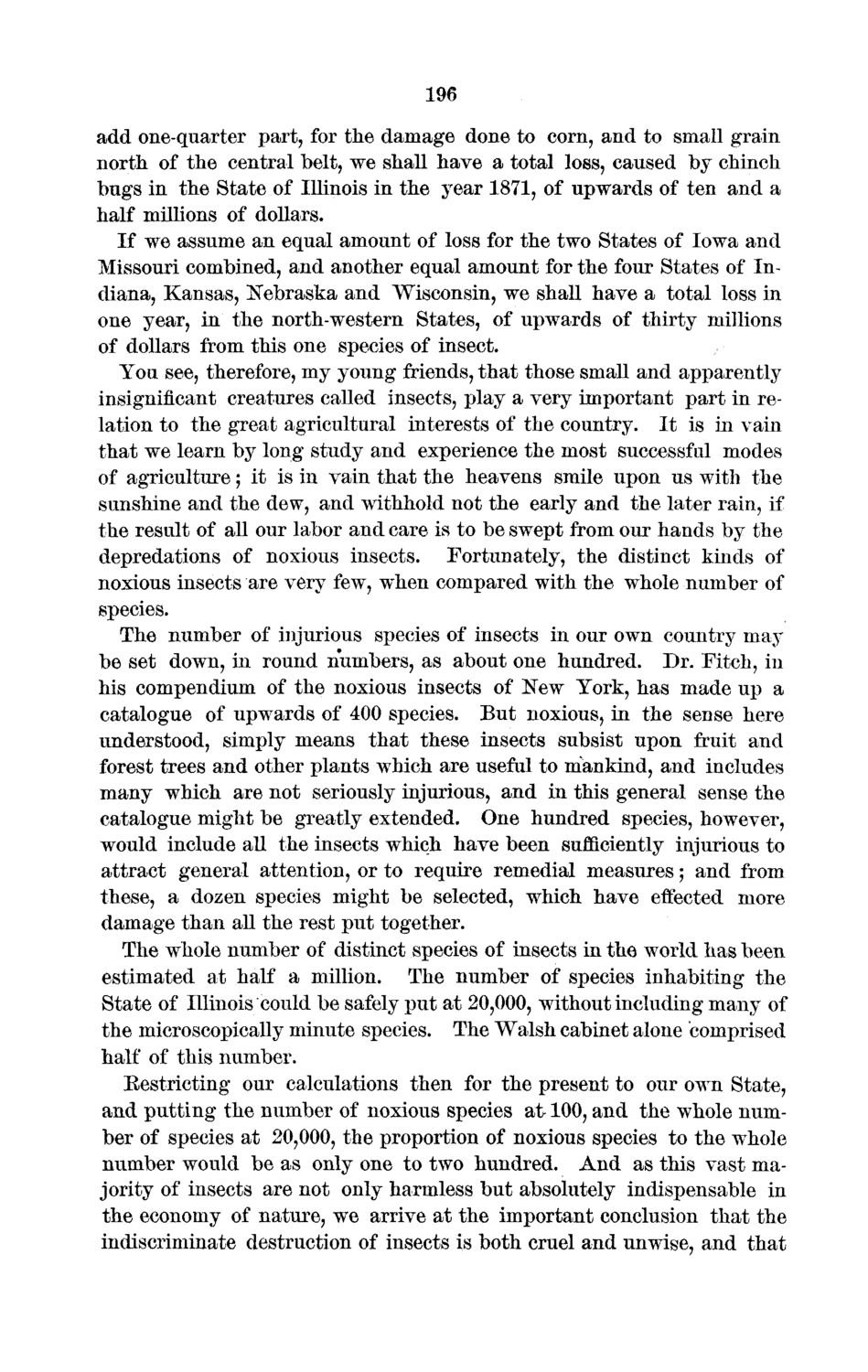| |
| |
Caption: Board of Trustees Minutes - 1872
This is a reduced-resolution page image for fast online browsing.

EXTRACTED TEXT FROM PAGE:
196 add one-quarter part, for the damage done to corn, and to small grain north of the central belt, we shall have a total loss, caused by chinch bugs in the State of Illinois in the year 1871, of upwards of ten and a half millions of dollars. If we assume an equal amount of loss for the two States of Iowa and Missouri combined, and another equal amount for the four States of Indiana, Kansas, Nebraska and Wisconsin, we shall have a total loss in one year, in the north-western States, of upwards of thirty millions of dollars from this one species of insect. You see, therefore, my young friends, that those small and apparently insignificant creatures called insects, play a very important part in relation to the great agricultural interests of the country. It is hi vain that we learn by long study and experience the most successful modes of agriculture; it is in vain that the heavens smile upon us with the sunshine and the dew, and withhold not the early and the later rain, if the result of all our labor and care is to be swept from our hands by the depredations of noxious insects. Fortunately, the distinct kinds of noxious insects are very few, when compared with the whole number of species. The number of injurious species of insects in our own country may be set down, in round numbers, as about one hundred. Dr. Fitch, in his compendium of the noxious insects of New York, has made up a catalogue of upwards of 400 species. But noxious, in the sense here understood, simply means that these insects subsist upon fruit and forest trees and other plants which are useful to mankind, and includes many which are not seriously injurious, and in this general sense the catalogue might be greatly extended. One hundred species, however, would include all the insects which have been sufficiently injurious to attract general attention, or to require remedial measures; and from these, a dozen species might be selected, which have effected more damage than all the rest put together. The whole number of distinct species of insects in the world has been estimated at half a million. The number of species inhabiting the State of Illinois could be safely put at 20,000, without including many of the microscopically minute species. The Walsh cabinet alone comprised half of this number. Eestricting our calculations then for the present to our own State, and putting the number of noxious species a t 100, and the whole number of species at 20,000, the proportion of noxious species to the whole number would be as only one to two hundred. And as this vast majority of insects are not only harmless but absolutely indispensable in the economy of nature, we arrive at the important conclusion that the indiscriminate destruction of insects is both cruel and unwise, and that
| |